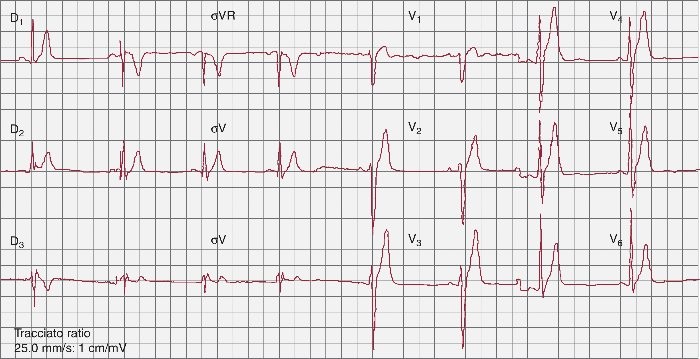Cardiac arrhythmias constitute one of the main causes of morbidity and mortality. Congenital cardiac arrhythmias are a separate group of heart disorders resulting from defects in the electro-physiological properties of the heart. Specifically, coordination of cardiac activity includes, among other, the synchronous and sequential opening and closing of ion channels in response to the electrical potential and subsequent transmission of the action potential to each compartment of the heart.
Although environmental factors clearly contribute to arrhythmogenesis, family and population studies have also demonstrated an underlying genetic etiology. For example, mutations in >20 genes, which encode and/or modulate specific ion-channels, are associated with various forms of arrhythmias, occurring in an otherwise structurally normal heart.
An example of such a disease are the Short QT (SQTS) and Long QT (LQTS) syndromes, associated with mutations in approximately 12 different genes that code for ion channels and are characterized by an increased risk of possibly fatal arrhythmias. The Short QT syndromes (SQTS) are manifested by reduction of the QT interval on the electrocardiogram (ECG), and if not treated, the resultant arrhythmia may lead to a variety of symptoms, such as dizziness and fainting (syncope), cardiac arrest and even sudden death. These symptoms can occur at any time from early infancy until much later in life. This disorder may also explain some cases of sudden infant death syndrome (SIDS), which is a major cause of unexplained death in infants younger than 1 year. However, some people with SQTS may never exhibit health problems associated with the condition. Correspondingly, the Long QT syndromes (LQTS) comprise a group of genetic disorders characterized by prolongation of the QT interval on the electrocardiogram (ECG) and a tendency for ventricular tachycardia of the type ‘torsades de pointes’, which often lead to fainting, cardiac arrest or sudden death of usually young, otherwise healthy, individuals.
We perform DNA sequence analysis, via Next Generation Sequencing (NGS) on a Genome Analyzer – Ion Proton platform, of all exons and intron-exon junctions/splice sites of the following 12 genes and Short QT (SQTS) και Long QT (LQTS):
| GENE |
OMIM GENE |
OMIM DISEASE |
OMIM DISEASE |
INHERITANCE (AR, AD, XL) |
| AKAP9 |
604001 |
611820 |
Long QT syndrome-11 |
AD |
| ANK2 |
106410 |
600919 |
Long QT syndrome 4 |
AD |
| CACNA1C |
114205 |
601005 |
Long QT-Timothy syndrome |
AD |
| CAV3 |
601253 |
607801 |
Long QT syndrome 9 |
AR |
| KCNE1 |
176261 |
612347 |
Long QT syndrome 5; Jervell and Lange-Nielsen syndrome 2 |
AR, AD |
| KCNE2 |
603796 |
613693 |
Long QT syndrome 6 |
AD |
| KCNH2 |
152427 |
613688; 609620 |
Long QT syndrome 2; Short QT syndrome 1 |
AD |
| KCNJ2 |
600681 |
609622; 170390 |
Short QT syndrome 3; Andersen syndrome |
AD |
| KCNQ1 |
607542 |
192500; 609621; 220400 |
Long QT syndrome 1; Short QT syndrome 2; Jervell and Lange-Nielsen syndrome |
AR, AD |
| SCN4B |
608256 |
611819 |
Long QT syndrome-10 |
AD |
| SCN5A |
600163 |
603830; 608567 |
Long QT syndrome-3; Sick sinus syndrome 1 |
AD, AR |
| SNTA1 |
601017 |
612955 |
Long QT syndrome 12 |
AD |
allowing us to detect, through the use of specially developed bioinformatics tools, >98% of all pathogenic mutations of the genes and the associated syndromes.
Where possible and/or necessary, we carry out additional MLPA analysis in order to detect deletions/duplications of the genes (please consult the final test report).
The test is highly sensitive and complex, so it is necessary that the results are assessed by a specialized team of clinical and molecular geneticists, in order to ensure safe and reliable testing.
Proper clinical genetic assessment and genetic counseling, both before and after testing, is essential in order to determine the optimum testing strategy and also to communicate properly the concepts of pathological and normal.
See also genomic testing for cardiac arrhythmias 40 genes NGS panel
InterGenetics is a Ion Torrent™ Certified Service Provider for Ion AmpliSeq sequencing on the Ion Proton platform


